By Amy Brennan
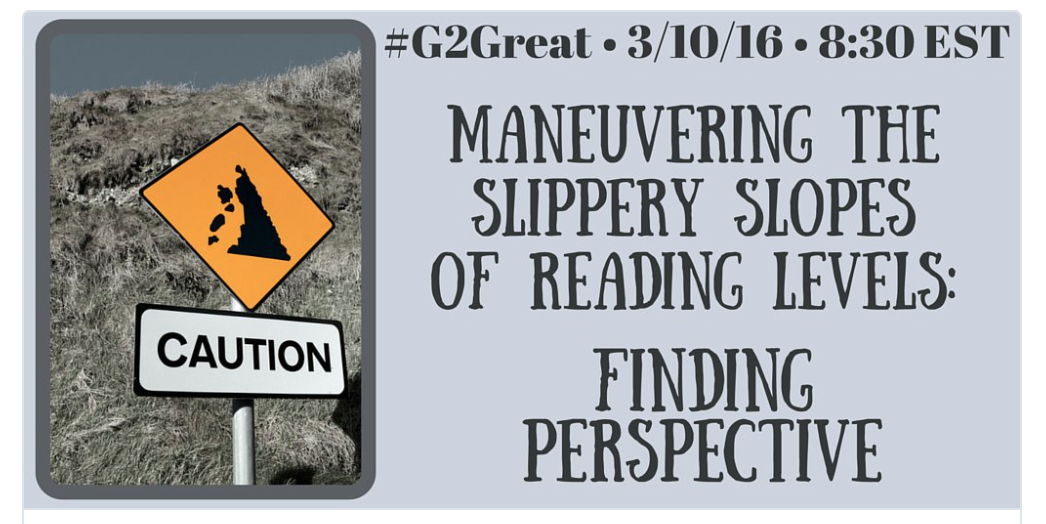
On March 10, 2016 #G2Great teased out our perspectives around reading levels. In reading through the tweets from our always thinking and learning #G2Great PLN, I focused my reflection and thoughts around these three ideas.
How do we teach them to do it on their own?
While levels have an important place in reading instruction, we have to keep one question in mind. That question is and always should be “How do we teach them to do it on their own?” This is the question that lingers in my mind as I raise my own children and every day as I walk through the halls of a school. If I am honest, this is at the front of my mind anytime I put a learner at the center and make a plan for instruction. I think of this question whether it is my children, teachers or students. Whether we talk about parenting or teaching (adults or students for that matter) what we are actually speaking about is learning. Learning. That is it. The goal for learning is independence in whatever “thing” we are teaching.
In the case of reading the goal is independence. Independence in reading looks like someone who chooses their own books, is responsible for their own reading, is curious and, therefore motivated to pick up something and read. Ultimately, the reader will experience growth in learning because of the reading. I am grateful to have @jdolci as part of my PLN because when he sent this tweet out into the Twitterverse he put the image in my mind that represents what I believe all readers can be.
But it cannot just be about independence, there is more to it than that. The second part of teaching them how to do this on their own is considering how we can best support students as they are learning to read texts with increasing complexity. It seems here is where the levels really come into play. As Irene Fountas taught us “Levels have an important place in the hands of teachers who understand them.” This quote moved our chat in a direction of so many thoughtful responses. @Kari_Yates and @lau7210 rallied our #G2Great troops around the idea of levels as instructional tools used by the teacher. This is the intentional work that helps students grow. Skillful teachers support students in independent reading and small groups that are flexible, based on not only student levels but also to support areas where students can stretch in their reading.
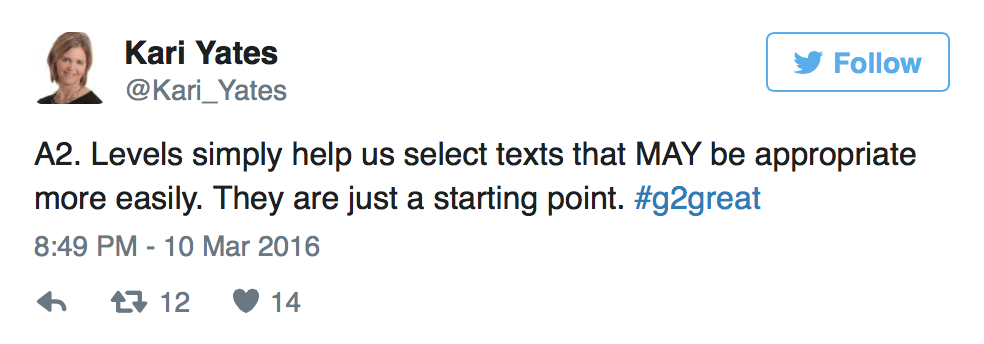
“Start with the Child not the Book.”
Dr. Mary Howard tweeted this little nugget of wisdom early on in the chat. It reminds me how important it is to look at what students need first. Often we find ourselves choosing books for students because they are our favorites, they are part of a program or they are recommended for a unit of study or to teach a particular strategy. What really matters is the child. We need to remember that books need to be relevant to kids. We need to sit down beside a child and talk about book choices for independent reading. We need to get books into kids’ hands, books that they can really connect to. We need kids to choose books for themselves for independent reading and at times when they need some support we have to think about the best way to do this. Nothing is more powerful than sharing with a child and saying, “I thought about you all weekend and I found this book for you. I really think you are the kind of reader who will get this book.” Ultimately our students need to read if they are going to become proficient independent readers.
Always Remember to Think and Ask Why
If something does not make sense we have to stop, think and ask why. @ChristinaNosek reminded us in the chat that we must always put purpose and intention first. Often we are racing day to day, trying to close gaps that widened over many years. We get so caught up that we don’t make time to think or ask why. If we want to create independent readers we have to create opportunities and experiences for students to practice that work in good chunks of time and in different situations. We have to always think about how we teach kids to read on their own. We have to put the child before the book and when things don’t make sense…ask why.
When we identify goals for individual students, those goals should always remain at the center of instructional decision making. Additionally ensuring that students experience multiple texts at various levels provides them with opportunities to navigate complex texts. Through read-aloud, shared reading, book clubs, small groups, strategy lessons, guided reading or independent reading, students will be making meaning of texts at different levels throughout the day. These intentional instructional experiences provide meaningful practice through a gradual release of responsibility that guides the way for readers. We can maintain perspective by viewing reading levels in flexible ways as we support students toward increasing independence. 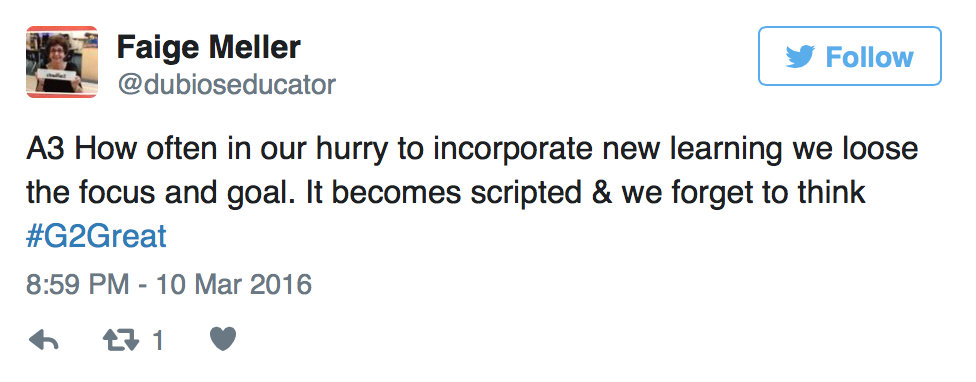
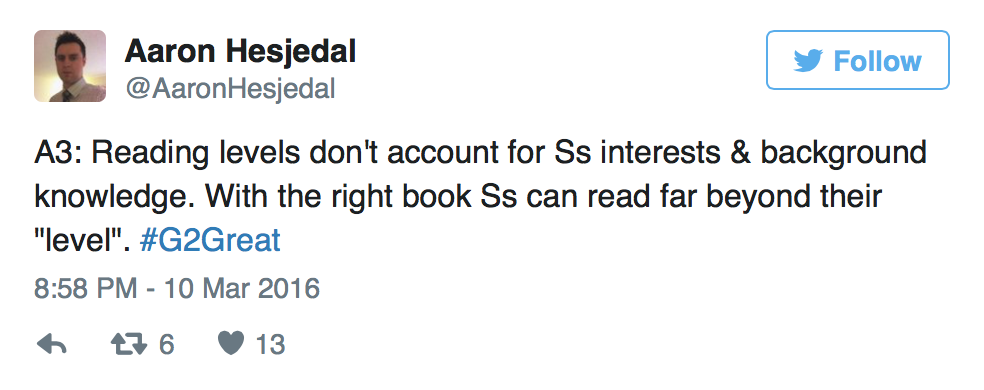

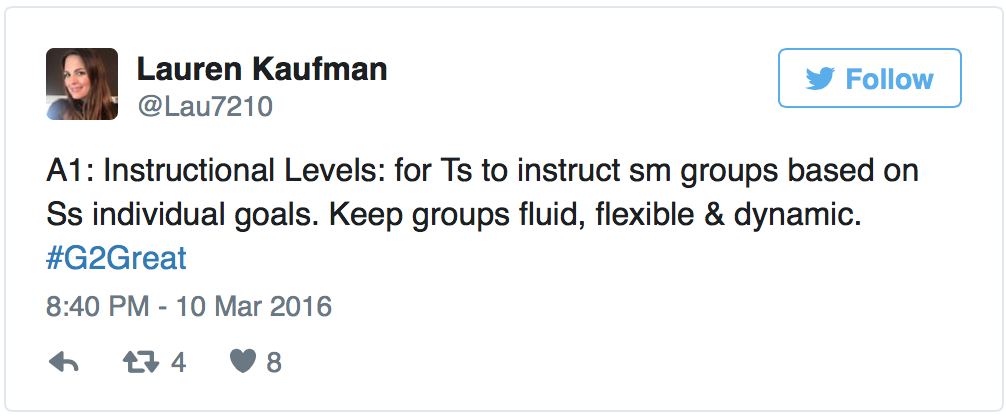
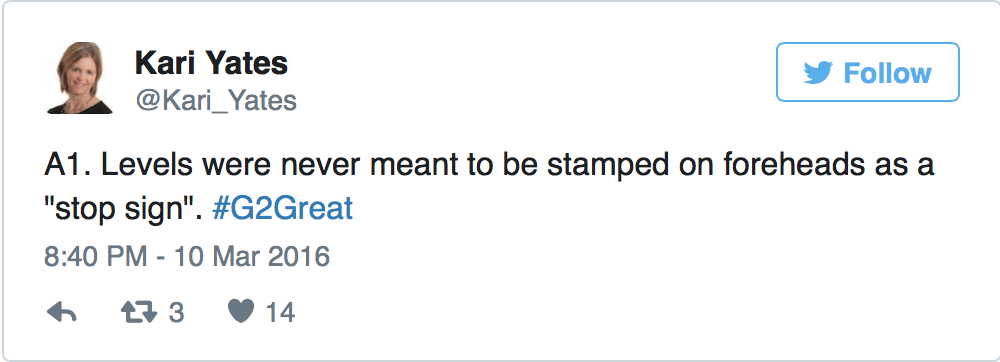
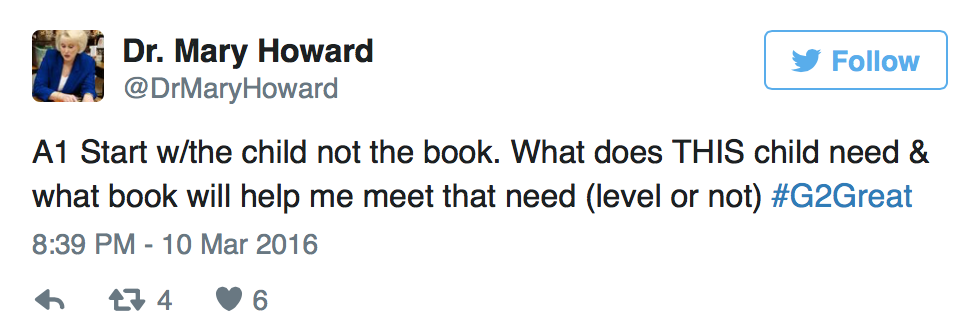
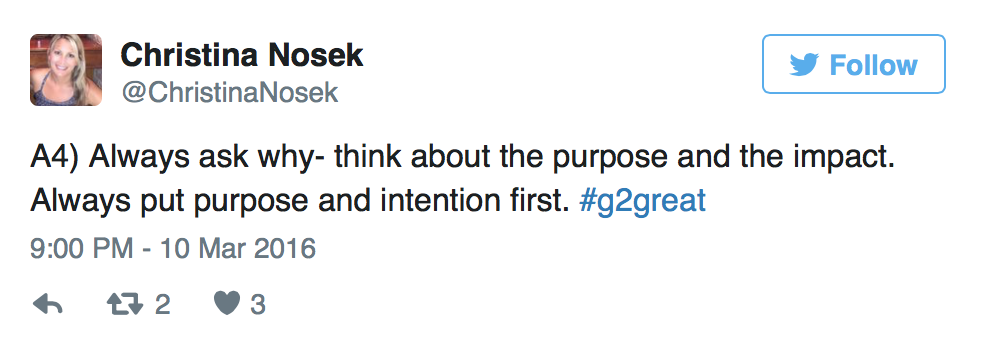
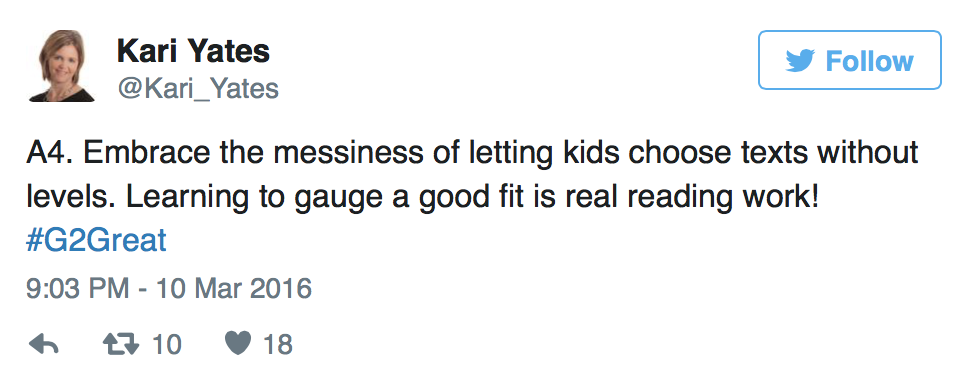
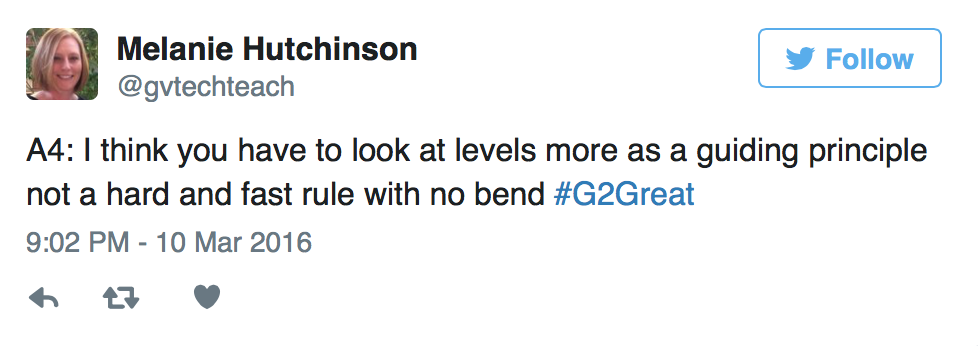
Amy, what an amazing post! Thank you for capturing those amazing nuggets from the #G2Great chat!